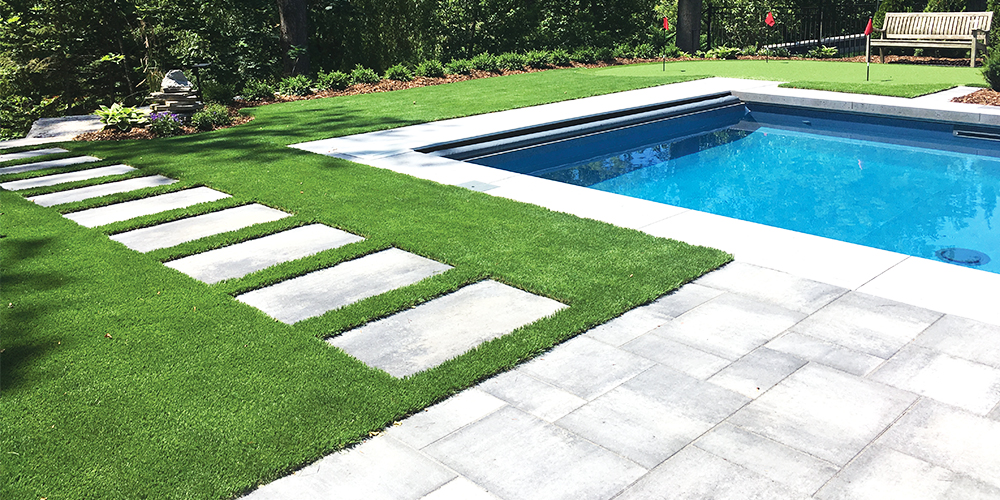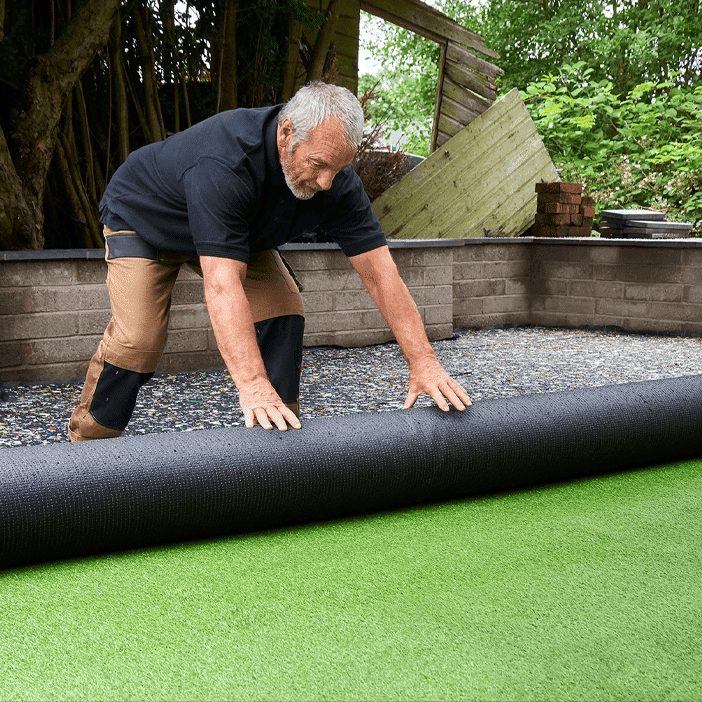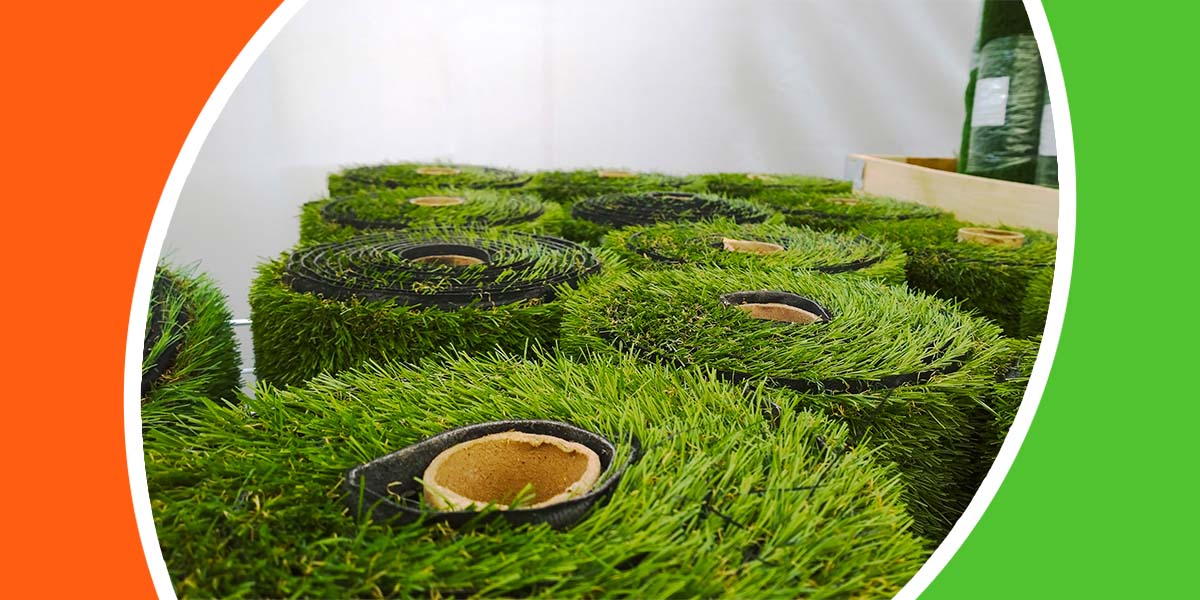Find Trusted Artificial Turf Companies Phoenix for Durable and Natural-Looking Grass
Explore the Environmental Advantages of Opting for Artificial Grass Solutions
The adoption of synthetic grass options provides an engaging chance to deal with pressing ecological obstacles. By substantially minimizing water usage and minimizing the application of hazardous chemicals, these alternatives not just advertise sustainable landscape design yet likewise safeguard local ecological communities. In addition, the reduced carbon footprint linked with reduced maintenance tasks adds to a more lasting method to land monitoring. Nonetheless, the effects of these advantages prolong beyond simple conservation initiatives, raising questions regarding their long-term effect on environment conservation and general environmental equilibrium. Checking out these measurements discloses a complex interaction worth considering.
Water Conservation Advantages
One of the most substantial benefits of man-made turf is its ability to preserve water. In comparison, man-made grass does not need watering, considerably decreasing the overall demand for water resources.
By removing the demand for normal watering, synthetic grass adds to sustainable landscape methods and aids alleviate the ecological effect of excessive water usage. The preservation of water extends to the reduction of runoff, which can lead to dirt disintegration and river air pollution.
In addition, the installation of synthetic grass enables homeowners and districts to allot water sources a lot more successfully, concentrating on crucial uses such as drinking water and farming. The shift towards artificial turf not only advertises accountable water use however likewise lines up with wider environmental goals intended at maintaining all-natural resources.
As communities increasingly prioritize sustainability, the water preservation advantages of man-made turf present an engaging situation for its adoption in business and domestic landscaping tasks.
Lowered Chemical Usage
The transition to synthetic grass substantially decreases the dependence on chemical treatments frequently utilized in all-natural lawn maintenance. Traditional grass management usually involves the application of herbicides, plant foods, and pesticides to promote development and control bugs. These chemicals can pose dangers to human health, neighborhood wildlife, and the atmosphere, adding to soil and water contamination.
On the other hand, synthetic grass eliminates the demand for these hazardous materials. Once mounted, it requires very little maintenance, mainly containing regular cleansing and infrequent infill replenishment. This decrease in chemical use not only profits the prompt environment but additionally adds to broader environmental security. By minimizing the release of synthetic substances right into the community, synthetic grass advertises healthier dirt and water systems.
Moreover, the absence of chemical overflow linked with synthetic grass installations helps protect local waterways from pollution, sustaining marine life and keeping biodiversity. Turf installation phoenix az. As communities increasingly prioritize lasting techniques, choosing for man-made grass provides a practical solution that straightens with ecological preservation goals. Through this change, homeowner can delight in lush environment-friendly rooms without endangering ecological health, leading the way for an extra sustainable future
Lower Carbon Impact

In addition, the installation of synthetic lawn can result in considerable water preservation. All-natural lawns require significant quantities of water for irrigation, which not just contributes to the carbon impact related to water extraction and therapy yet likewise strains local water resources. On the other hand, fabricated lawn needs minimal upkeep, requiring no watering, thereby considerably lowering water usage and its connected power prices.
In addition, the longevity of synthetic grass contributes to its decreased carbon impact. With a lifespan of approximately 15 years or even more, the need for regular replacements is diminished, leading to less waste and lower energy consumption in production and getting rid of conventional yard options. Generally, synthetic grass offers a lasting option for environmentally aware landscaping.
Habitat Conservation
Environment conservation is a critical factor to consider in the dispute over landscaping choices, especially when contrasting synthetic grass to natural lawn. Natural grass yards often call for considerable upkeep, including making use of herbicides, plant foods, and pesticides, which can adversely influence local ecosystems. These chemicals can seep into the i was reading this dirt and waterways, hurting indigenous plants and animals and interrupting local habitats.
Man-made lawn eliminates the need for unsafe chemicals, thus securing neighboring wild animals and maintaining the honesty of bordering ecosystems. The installation of synthetic turf can lead to the conversion of former grass areas into more biodiverse landscapes, such as pollinator yards or native plant locations, which can support regional wild animals.
Eventually, the shift to man-made turf not only preserves water and lowers upkeep efforts but additionally promotes a more unified partnership between human activities and the all-natural atmosphere, promoting environment conservation in the process.
Long-Term Sustainability
Lasting sustainability is a crucial factor in reviewing the advantages of synthetic grass over standard grass yards. One of the most significant advantages of synthetic lawn is its longevity; it can check this site out last as much as 15-20 years with minimal upkeep, whereas natural lawn requires regular reseeding and replacement. This durability reduces the requirement for constant resources, such as water, plant foods, and pesticides, which are essential for keeping a healthy turf lawn.
Furthermore, synthetic grass contributes to a decrease in carbon emissions connected with yard care tools. Typical yards typically require gas-powered lawn mowers, trimmers, and blowers, every one of which contribute to air pollution. Arizona turf. In contrast, man-made lawn eliminates the need for such devices, advertising a cleaner setting
Furthermore, the manufacturing of synthetic grass progressively uses recycled products, enhancing its sustainability profile. As makers take on environment-friendly techniques, the ecological impact of synthetic grass remains to diminish.

Conclusion
The adoption of synthetic grass options offers substantial ecological benefits, consisting of considerable water preservation, minimized dependence on dangerous chemicals, and a reduced carbon footprint. Fabricated grass aids in protecting natural environments by decreasing land disruption and promoting long-term sustainability via the usage of durable products. Collectively, these elements emphasize the capacity of synthetic turf to add positively to ecological health and wellness and provide a viable choice to standard landscaping techniques in a significantly resource-conscious world.
In comparison, man-made turf does not require watering, substantially reducing the total need for water resources. Learn More Here By decreasing the release of artificial compounds right into the ecosystem, man-made turf promotes much healthier soil and water systems.
Moreover, the installation of man-made lawn can result in substantial water preservation. In comparison, synthetic lawn requires minimal upkeep, calling for no watering, thus substantially reducing water usage and its connected power costs.
